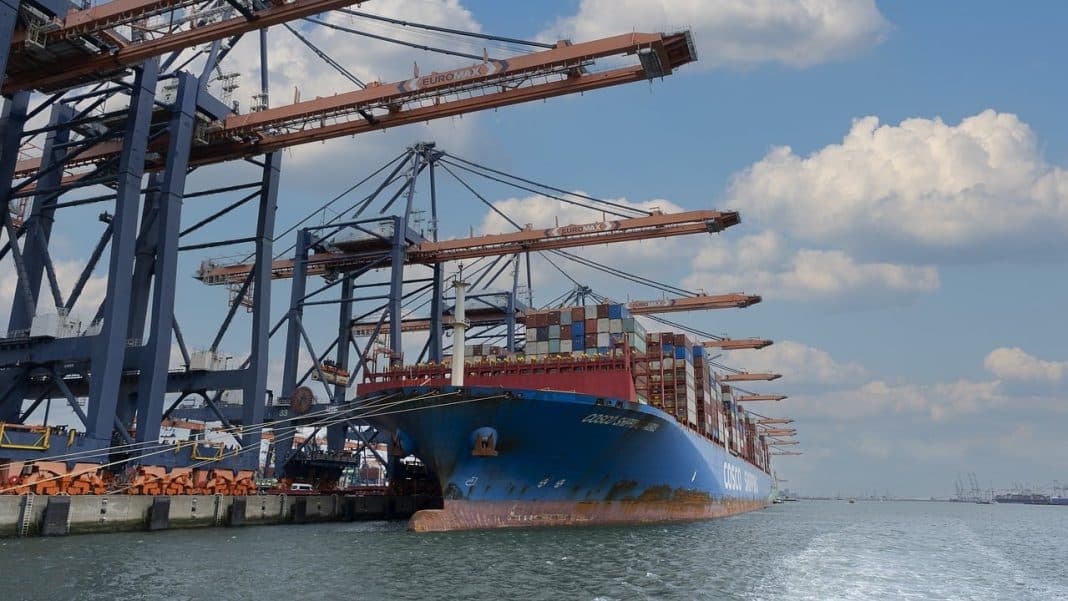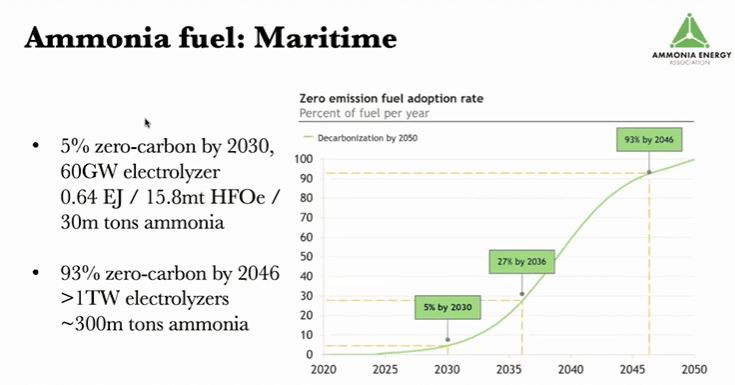Converting ammonia into hydrogen is an emission-free fuel to help decarbonize the heavy-duty and shipping transportation industry.
The transportation industry is the biggest polluter in the U.S. In 2020, it accounted for the largest share at 27% of all the country’s GHG emissions according to the US Environmental Protection Agency.
Due to the significant amount of transportation emissions, actions are taken to reduce the sector’s pollution. This includes the notoriously dirty shipping industry.
The recently introduced Clean Shipping Act of 2022 aims to rid of emissions in ports in 2030 as the soonest. The law also restricts anchoring of ships in U.S. ports that don’t follow the zero emissions guidelines.
Ammonia Is Key to Hydrogen Rollout
As per the International Maritime Organization (IMO), ships with 5,000 gross tonnage and above are responsible for 85% of net GHG emissions from the shipping industry.
The industry currently emits about 1 billion tons of carbon annually. But with increased regulation, carbon offsets, and innovative technology, carbon emissions can be reduced.
IMO’s goal is to decrease that by 50% by 2050, and will implement a long-term strategy by 2023.
Given the size and weight of those ships, battery technology is not possible to use in them. Thus, hydrogen has become the leading alternative technology to power the massive vessels.
And to support the rollout of hydrogen, ammonia is a critical element.
- Ammonia naturally doesn’t contain any carbon molecules. So it has a great potential to be a zero emission fuel. Plus, it can carry hydrogen effectively to a fuel cell.
Hydrogen, in itself, has some challenges when it comes to storage and transportation. This is where ammonia becomes helpful in aiding the deployment of hydrogen.
Why ammonia?
- There’s already existing infrastructure for ammonia as it has been used in agriculture for long years as input. There’s a pipeline for ammonia production and storage, making it a potential renewable fuel.
- Also, ammonia is a liquid which makes it easy to store. This reduces the cost and space requirements for its storage in comparison with hydrogen and LNG.
- Lastly, ammonia even has a high volumetric energy density. It means the storage vessels can be light, fast, and travel long distances.
With all these qualities of ammonia, it’s suitable for decarbonizing the shipping industry. After all, there has been an agreement that the sector has to shift to new fuels and propulsion technologies to reach global emission goals. And ammonia is one option for that.
Based on the infographic below, zero carbon fuels will hit a 5% fuel mix by 2030. That means the industry has about 8 years remaining to achieve 60GW of electrolyzers to produce about 30 million tons of ammonia.
Meanwhile, it’s the size and operational profile of a ship that determines the applicability of carbon-free technologies.
For instance, the most vital performance metric for huge sea vessels like cargo ships is often the energy density requirements for fuels and motor systems. But for small and medium-sized ships like ferries, such factors are less strict.
Ammonia & Hydrogen for Clean Shipping
The clean hydrogen community expects that government financing programs will promote the technology and infrastructure in the U.S.
There are some major initiatives in place to advance the policy environment and drive the ambitious hydrogen agenda.
Take for example the case of putting up regional “Hydrogen Hubs”. These efforts make it easier for advancing clean hydrogen technology. These hubs can positively impact the country’s climate policy environment.
More collaboration, funding, and technology demonstrations can help push this fuel alternative for a clean shipping industry.
Ammonia is currently gaining traction as a solution for carrying hydrogen and decarbonizing shipping. In this case, it makes sense to include ammonia technology solutions in those efforts.
Ultimately, there must be a full transition away from fossil fuels to tackle global warming. And the shipping sector must do its part to cut down its emissions.
Clean hydrogen technology alongside ammonia may offer a suitable solution.



